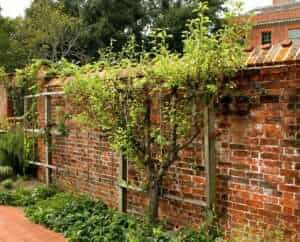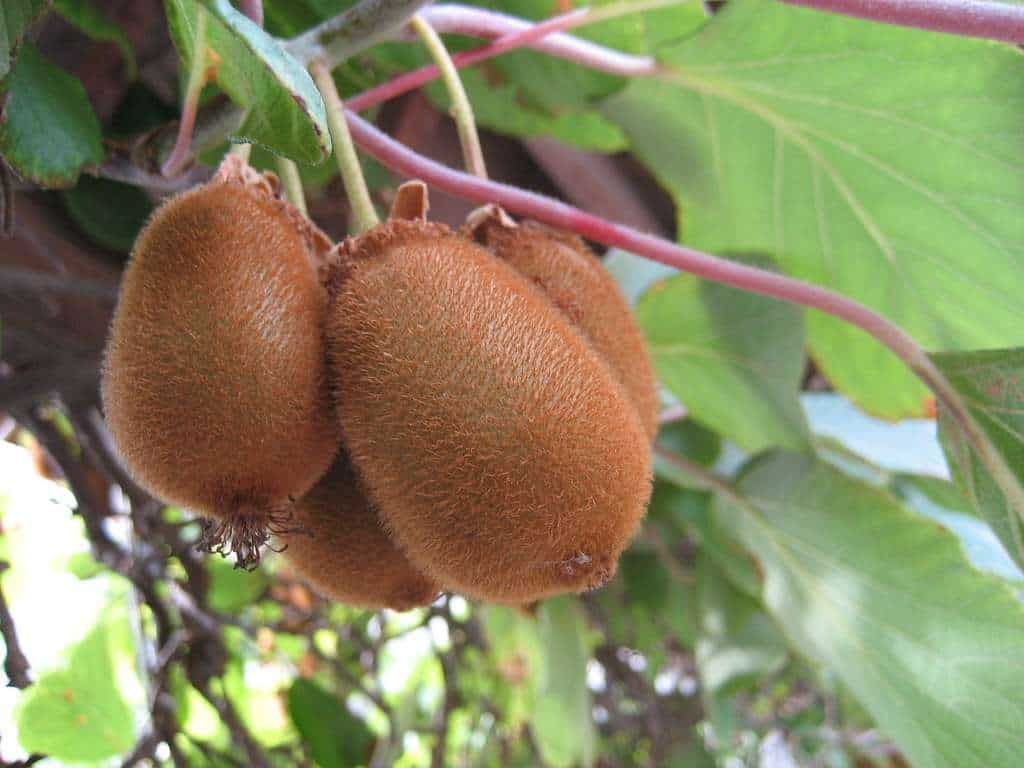If you live in an urban or suburban area with limited outdoor space, but still want to grow your own fruit trees, you may want to consider the art of espalier. Espalier is the practice of training fruit trees to grow flat against a wall or fence in a pattern, maximizing space and creating a beautiful and functional garden feature.
Art of Espalier
Espaliered fruit trees not only provide fresh fruit, but they can also enhance the aesthetic of your outdoor space. With the right training and care, you can create intricate designs and patterns with your fruit trees that will impress your neighbors and make the most of your small space.
Choosing the Right Trees

The first step in creating an espaliered fruit tree is choosing the right tree. Many fruit trees are suitable for espalier, including apple, pear, peach, cherry, and fig. When selecting a tree, look for a young tree with a straight, sturdy trunk and healthy, flexible branches. It is also important to choose a tree that is suitable for your climate and soil type.
Training Your Tree
Once you have chosen your tree, it is time to start training it. The best time to begin training is in the winter while the tree is dormant. This will allow you to see the tree’s structure and easily manipulate its branches.
There are several different patterns that you can use to train your fruit tree, including the cordon, fan, and espalier. The cordon pattern involves training the tree to grow in a single horizontal row along a wall or fence, while the fan pattern involves training the tree to grow in a fan shape against a wall or fence. The espalier pattern involves training the tree to grow in a more complex pattern, such as a diamond or a Belgian fence.
To begin training your tree, tie a flexible wire or string to the wall or fence where you want your tree to grow. Attach the wire or string to the trunk of the tree and gently bend the branches to follow the pattern you have chosen. As the tree grows, continue to tie the branches to the wire or string, taking care not to damage the bark.
Maintaining Your Tree
Espaliered fruit trees require regular maintenance to keep them healthy and looking their best. In the summer, prune your tree regularly to keep the branches from becoming too long and to encourage fruit production. It is also important to water your tree regularly, especially during hot and dry weather.
In the winter, prune your tree again to remove any damaged or diseased branches. You may also need to replace any wires or strings that have become damaged or worn.
Benefits of Espaliered Fruit Trees
Espaliered fruit trees offer several benefits beyond their aesthetic appeal. Because the trees are trained to grow flat against a wall or fence, they take up less space than traditional fruit trees, making them ideal for small gardens or even balconies. Additionally, the flat shape of the tree makes it easier to pick the fruit and care for the tree.
Espaliered fruit trees can also be grown in a variety of patterns, allowing you to create a unique garden feature that reflects your personality and style. Whether you choose a simple cordon pattern or a complex diamond pattern, your espaliered fruit tree is sure to be a conversation starter and a source of pride in your garden.
Growing fruit trees in small spaces is possible with the art of espalier. By training your tree to grow flat against a wall or fence in a pattern, you can maximize your space and create a beautiful and functional garden feature. With the right care and maintenance, your espaliered fruit tree will provide fresh fruit and enhance the aesthetic of your outdoor space for years to come.
Keywords: Espalier, Fruit Trees, Small Spaces, Urban Gardening, Tree Training, Garden Design, Tree Maintenance, Cordon Pattern, Fan Pattern, Belgian Fence, Diamond Pattern, Fruit Production.
Focus keyword: Espalier.
Check out our Novel Writing Workbooks
Check out Little Tree Food Forest for articles on food forests and homesteading.
Check out FoodieScapes for articles on growing, fermenting and preserving food
Check out StoryScapes.World for articles on writing.
Subscribe to our newsletter to get information delivered to your inbox on edible landscaping, growing food and medicinal plants, growing mushrooms, foraging, fermentation, food preservation, raising small livestock, and more.










